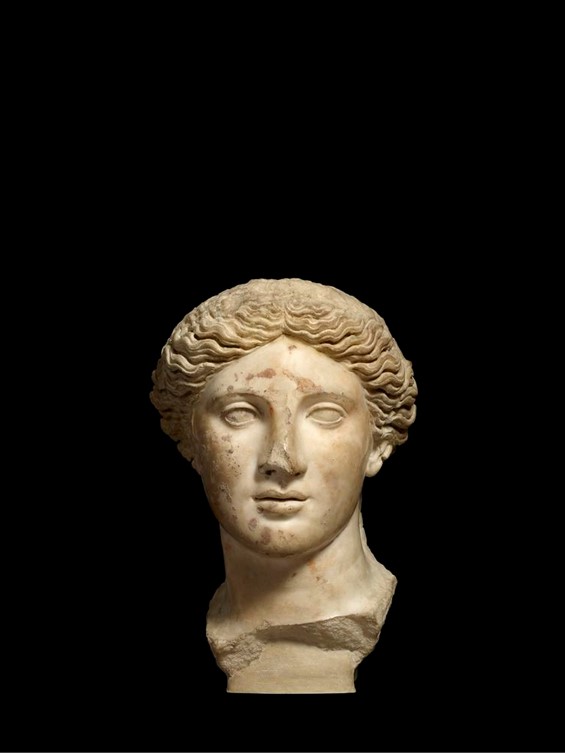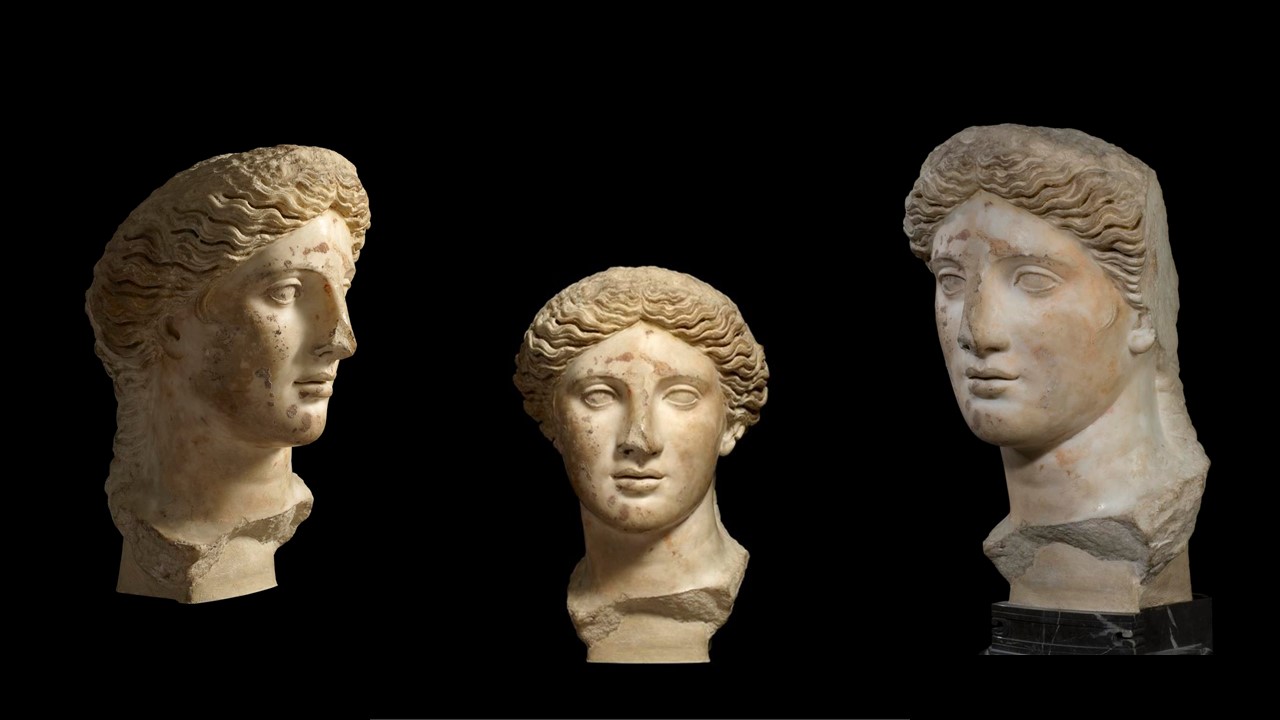
https://www.britishmuseum.org/collection/object/G_1884-0617-1
Ancient Greek and Roman sculpture was once colorful, vibrantly painted and richly adorned with detailed ornamentation. Chroma: Ancient Sculpture in Color reveals the colorful backstory of polychromy—meaning “many colors,” in Greek—and presents new discoveries of surviving ancient color on artworks in The Met’s world-class collection. Exploring the practices and materials used in ancient polychromy, the exhibition highlights cutting-edge scientific methods used to identify ancient color and examines how color helped convey meaning in antiquity, and how ancient polychromy has been viewed and understood in later periods… write the Metropolitan Museum experts as they introduce their Chroma: Ancient Sculpture in Color (Through March 26, 2023) Exhibition. A modern study of the color scheme of the so-called Treu Head in the collection of the British Museum is interesting to explore. https://www.metmuseum.org/exhibitions/listings/2022/chroma
The Treu Head was found on the Esquiline Hill in Rome in 1884 and soon after its discovery was acquired for the British Museum. It is a high-quality Parian marble sculptural piece from a statue of Venus or Minerva, with extraordinarily rich traces of black and red paint on the eyebrows and eyes, and yellow paint on the hair and brow. The flesh is remarkably rendered in pinkish skin colour. This is an insert head. It is finished and painted only on the front side because it was inserted into a larger-than-life sculpture, which was made of a different material. This extraordinary mid-2nd century AD Roman Head was named after the late nineteenth-century German archaeologist Georg Treu who first published his investigations of its preserved colour. https://www.researchgate.net/publication/262324723_The_’Treu_Head’_a_case_study_in_Roman_sculptural_polychromy and https://www.britishmuseum.org/collection/object/G_1884-0617-1
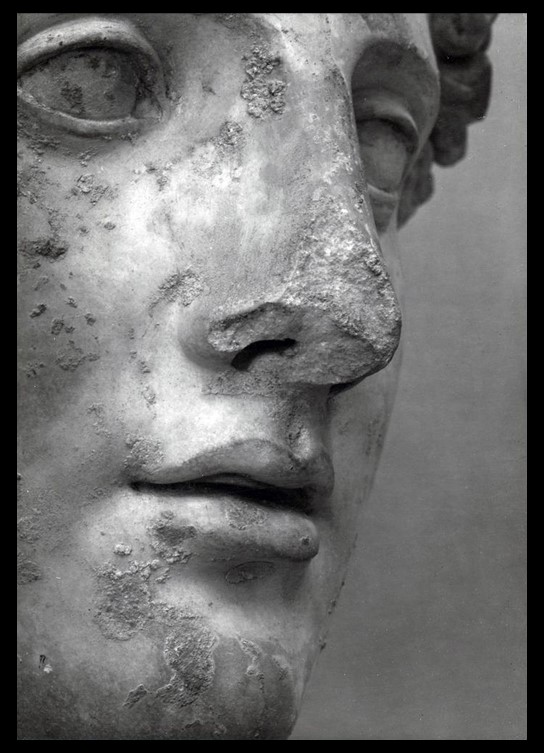
Ulrike Koch-Brinkmann and Vinzenz Brinkmann, fascinated by ancient Greek polychromy and supported by Stiftung Archäologie, are instrumental in coloured reconstructions of famous Greco-Roman statues. The Brinkmanns worked hard in the making of polychrome casts of ancient sculptures, as well as publications and scientific documentation (e.g. in the form of film documentaries) on the subject in question. A chief aim of the Stiftung Archäologie was to promote the creation of didactic (cognitive) objects on the basis of scientific research. http://www.stiftung-archaeologie.de/reconstructionsen.html
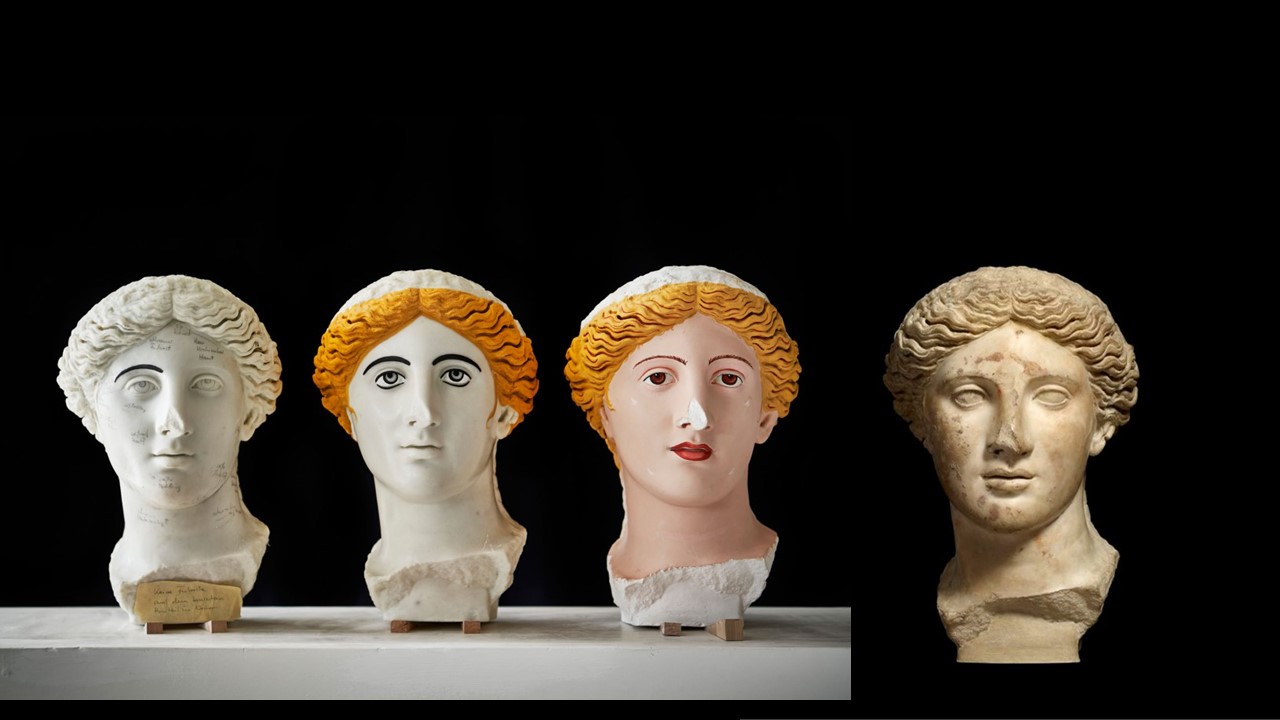
A key piece in their research is the Treu Head in the collection of the British Museum since the late 19th century. According to Vinzenz Brinkmann, it is remarkable that the Treu Head was not cleaned following its discovery, as was the usual practice at the time. As a result, the clear evidence for an evenly applied skin tone over the entire face is of central importance for our basic understanding of the polychromy of ancient statuary. https://www.metmuseum.org/exhibitions/listings/2022/chroma/exhibition-objects
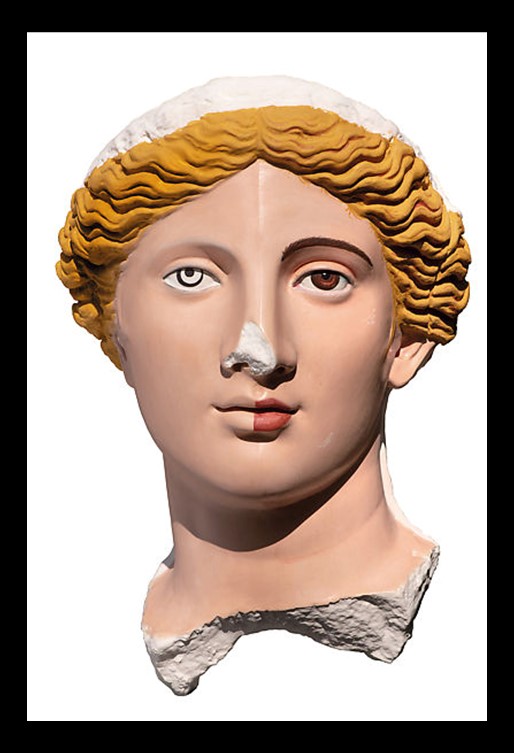
Remarkably rich in traces of different coloured pigments, Treu Head is a valuable source of information in Roman sculptural polychromy. According to Giovanni Verri, Thorsten Opper, and Thibaut Deviese, the head retained extensive traces of its original polychromy, including otherwise rarely preserved skin pigments. Ever since the German scholar Georg Treu published the sculpture in 1889, it has played a significant part in the discussion on ancient sculptural polychromy and in particular the question of whether or not the flesh parts of marble sculptures were originally painted. Examining the Treu Head, the above mentioned scholars, found that complex mixtures of pigments, and selected pigments for specific areas, were used to create subtle tonal variations. The conclusion of their research confirmed beyond doubt the authenticity of the preserved pigments and thereby the sculpture itself, which can now rightfully reassume its important place in the art historical discussion of the polychromy of ancient sculpture. https://www.academia.edu/5842238/G_Verri_T_Opper_and_T_Deviese_The_Treu_Head_a_case_study_in_Roman_sculptural_polychromy_The_British_Museum_Technical_Bulletin_4_2010_39_54
For a PowerPoint on Polychromy, please… Check HERE!
An interesting, Metropolitan Museum Video titled The “Treu Head”: A Virtual Color Reconstruction… https://www.youtube.com/watch?v=k5iEDtL2I8Y
If you are interested in visiting or browsing through the Metropolitan Museum of Art Exhibition Chroma: Ancient Sculpture in Color (Through March 26, 2023), please Check… https://www.metmuseum.org/exhibitions/listings/2022/chroma/visiting-guide and https://www.metmuseum.org/exhibitions/listings/2022/chroma/exhibition-objects
